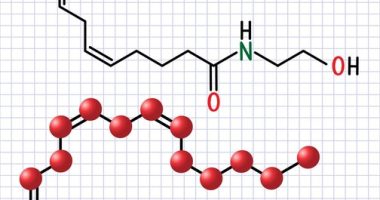A recent study conducted by a team of researchers led by Lin Zhu investigates the significant effects of specialized triacylglycerols (TAGs) in human milk fat substitutes (HMFS) on the metabolic health and gut microbiota of weaned rats. The study focuses on the specific impact of -2 palmitic TAGs and the ratio of two major TAGs—1-oleoyl-2-palmitoyl-3-linoleoylglycerol (OPL) to 1,3-dioleoyl-2-palmitoylglycerol (OPO)—on bile acid metabolism and the composition of intestinal microbiota after a four-week high-fat feeding regime.
Researchers explored how these tailored fat structures found in HMFS could mimic the beneficial properties of natural human milk, potentially offering improved nutritional strategies for infants. Significant findings indicated that rats fed HMFS exhibited notable increases in various primary and secondary bile acids, changes that were more pronounced with higher levels of -2 palmitic acid TAGs and specific TAG ratios.
Additionally, this enhanced TAG formulation influenced key metabolic signaling pathways and enzyme activities associated with bile acid synthesis and thermogenesis in the liver and adipose tissues. Notably, changes in the gut microbiota included increases in beneficial microbes linked to bile salt hydrolase activity and fatty acid production, aligning with reduced obesity risks.
This study not only advances our understanding of dietary fats in infant nutrition but also underscores the potential of HMFS in aligning infant formulas more closely with the beneficial attributes of human breast milk, thereby supporting better metabolic health and microbiota profiles in infants.
Modern infant nutrition relentlessly seeks to match the manifold benefits of human breast milk, acclaimed for its optimal balance of nutrients tailor-made for infant development. Human milk provides not only a complete array of necessary nutrients but also bioactive compounds that significantly influence the immune system, gastrointestinal development, and metabolic processes in infants. Among these, the specific structure and composition of fats, particularly triacylglycerols (TAGs), play pivotal roles.
Human milk fat is uniquely characterized by its high concentration of TAGs, where palmitic acid is predominantly esterified at the sn-2 position. This structural specificity significantly impacts nutrient absorption and metabolism, reflecting in the superior digestibility and calcium absorption and lower incidences of soap formation in the intestines compared to typical infant formulas, whose palmitic acid is more often esterified at the sn-1 or sn-3 positions. The consequential formation of calcium soaps could lead to harder stools and lower calcium bioavailability.
Understanding that the structure of dietary fats in infant formulas can influence health outcomes, research and development have led to the creation of human milk fat substitutes (HMFS) that attempt to replicate the TAG structure found in human milk more closely. These HMFS are designed to include higher levels of -2 palmitic acid, theorized to mimic more closely the beneficial attributes of natural human milk fats.
The challenge remains, however, to not only match the structural makeup of human milk TAGs but also to enhance the formula with fats that could confer additional health benefits. The study led by Lin Zhu builds on this premise, investigating how specific TAG structures within HMFS—particularly the ratio of 1-oleoyl-2-palmitoyl-3-linoleoylglycerol (OPL) to 1,3-dioleoyl-2-palmitoylglycerol (OPO)—affect health outcomes such as metabolism and gut microbiota composition in a controlled setting using animal models.
Historically, nutrition research often employs rodents to simulate human conditions, as they allow for controlled studies of dietary interventions and their physiological impacts, though the translatability to human infants needs careful consideration. The selection of weaned rats in Zhu’s study highlights an effort to explore post-lactational influences of HMFS on young, developing organisms, providing insights potentially translatable to post-breastfeeding human infants transitioning to formula diets.
These contexts set the stage for Zhu’s study, emphasizing the importance of investigating HMFS not merely as direct substitutes but as advanced nutritional formulations that could potentially optimize the health trajectory of infants unable to be breastfed, fitting into a broader conversation about nutritional adequacy and the quest for formulae that close the gap with human breast milk’s comprehensive benefits.
The methodology employed in Lin Zhu’s research is meticulously designed to assess the impact of specialized triacylglycerols (TAGs) within human milk fat substitutes (HMFS) on metabolic health and gut microbiota in weaned rats. The experiment revolves around creating a controlled environment to simulate real-life infant feeding regimes through the use of rodent models, enabling close observation and detailed analysis.
### Experimental Design
The researchers divided weaned male Sprague-Dawley rats into multiple groups, each receiving a different diet composition. Each group corresponded to a distinct formulation:
1. A control group fed with standard rat chow.
2. A group receiving a high-fat diet containing conventional infant formula fats.
3. Multiple groups where each received a high-fat diet but with varying concentrations of -2 palmitic acid and distinct ratios of the TAGs OPL (1-oleoyl-2-palmitoyl-3-linoleoylglycerol) to OPO (1,3-dioleoyl-2-palmitoylglycerol).
Each diet was tailored to ensure isocaloric and isonitrogenous conditions among the groups to exclude the influence of different energy and protein intakes on the study outcomes.
### Duration and Feeding
The feeding trial lasted for four weeks, a period chosen to allow significant physiological responses while mimicking a critical window in post-weaning development in infants. This duration is pertinent to observe changes that might occur in the early stages of life when infants typically experience rapid growth and development.
### Sample Collection and Analysis
Throughout the experiment, meticulous records of food intake and body weight were maintained. At the conclusion of the feeding period, the rats were euthanized, and various tissues, including liver, adipose tissue, and sections of the gastrointestinal tract, were collected for further analysis.
**Biochemical Analyses:** Enzyme activities related to lipid metabolism and bile acid synthesis were measured in liver and adipose tissues. Bile acids in the plasma, liver, and intestine were quantified using gas chromatography-mass spectrometry (GC-MS) to evaluate changes in bile acid profiles and their metabolic repercussions.
**Microbiota Profiling:** The gut microbiota compositions were analyzed using high-throughput 16S rRNA gene sequencing. Fecal samples collected at the end of the study provided DNA that was subjected to this analysis, thus allowing for an assessment of how different diets influenced the diversity and population dynamics of intestinal bacteria.
### Hypothesis Testing and Statistical Analysis
Statistical tests such as ANOVA were used to determine significant differences among the experimental groups regarding weight gain, enzyme activity, bile acid concentrations, and microbial populations. Relationships between dietary TAG structures, metabolic health metrics, and microbiota profiles were determined through correlation analyses and multivariate statistical techniques.
### Compliance with Ethical Standards
The study was conducted in strict accordance with recommendations from the Guide for the Care and Use of Laboratory Animals. The protocol was approved by the Institutional Animal Care and Use Committee (IACUC) of the university where the research was conducted, ensuring all animal research was conducted under ethical guidelines.
Through this structured and thorough methodology, Zhu’s team expects to illustrate how modified TAGs in HMFS can affect physiological processes relevant to infancy, potentially paving the way for optimized infant nutritional formulas that offer benefits akin to those of human breast milk.
### Key Findings and Results
The experimental outcomes provided compelling insights into the effects of specialized triacylglycerols (TAGs) in human milk fat substitutes (HMFS) on metabolic health and gut microbiota. Here are the primary findings of Lin Zhu’s study:
**1. Impact on Bile Acid Metabolism:**
The study revealed a significant modification in the bile acid profiles of weaned rats. Rats consuming diets with higher levels of -2 palmitic acid-rich TAGs exhibited an increase in the production of both primary and secondary bile acids. This increase implies enhanced liver function and bile acid synthesis pathways, potentially improving fat digestion and absorption which are crucial for infant development. Notably, the ratio of OPL to OPO specifically influenced the concentrations of certain beneficial secondary bile acids, which are known for their roles in regulating cholesterol metabolism and exerting antioxidant effects.
**2. Thermogenic and Metabolic Enzyme Activity:**
Enhanced enzyme activities related to lipid metabolism were observed, particularly those linked with thermogenesis in liver and adipose tissues. This suggests that HMFS with specific TAG structures can activate metabolic pathways that favor energy expenditure, possibly contributing to better weight management and reduced obesity risk. The increased activities of enzymes like CYP7A1, indicative of cholesterol conversion to bile acids, highlight a pivotal role in maintaining cholesterol homeostasis.
**3. Alterations in Gut Microbiota:**
Significant shifts in the composition of the gut microbiota were another remarkable outcome. Diets with tailored HMFS fostered a higher abundance of beneficial microbial communities, including those associated with bile salt hydrolase activity. These microbial changes were correlated with improved fatty acid profiles and enhanced production of short-chain fatty acids beneficial for gut health and immunity. The altered gut flora also pointed to a potential decrease in inflammatory responses, aligning with a healthier metabolic profile.
**4. Weight Management and Obesity Prevention:**
Interestingly, despite higher fat consumption, rats fed with HMFS designed with specific TAG structures showed better control over weight gain compared to those on conventional high-fat diets. This finding suggests that the structure of dietary fats can influence energy metabolism and storage, emphasizing the role of fat structure in managing and potentially preventing obesity.
**5. Comparative Analysis with Conventional Infant Formula Fats:**
Comparatively, the group receiving conventional infant formula fats displayed less favorable outcomes in terms of enzyme activities, bile acid profiles, and gut microbiota composition. This contrast underscores the importance of the structural makeup of dietary fats and highlights the potential advantages of HMFS in mimicking the superior qualities of human breast milk fats.
### Implications and Further Research
These findings validate the hypothesis that the structural nuances of TAGs in HMFS can substantially influence key physiological functions in weaned rats, providing a promising outlook for these specialized fats in infant nutrition. The implications for infant formula production are significant, suggesting that closer replication of human milk fat structure and its bioactive effects could greatly enhance infant formula’s nutritional and metabolic benefits.
Future studies are warranted to explore these effects further in human clinical trials and to investigate long-term outcomes in infants fed with HMFS-enhanced formulas. Additionally, exploring the mechanistic pathways through which these TAGs influence metabolic processes at the molecular level could offer deeper insights into optimizing infant formula for better health outcomes.
This study by Lin Zhu and colleagues sets a foundation for innovative approaches in developing more health-promotive infant formulas that bridge the nutritional gap between formula-fed and breastfed infants, stepping closer to replicating the profound benefits of natural human milk.
### Future Directions and Concluding Thoughts
The pioneering research by Lin Zhu and colleagues opens an avenue for promising advancements in infant nutrition, centering on the unique structures of triacylglycerols (TAGs) in human milk fat substitutes (HMFS). This study not only enhances our understanding of how specific dietary fats can influence metabolic health and gut microbiota in young organisms but also serves as a platform for developing infant formulas that more closely replicate the beneficial properties of human breast milk.
Moving forward, several key areas merit further investigation. Firstly, extending this research to human clinical trials could validate the translatability of these findings from rodent models to human infants. Such studies are crucial for confirming the safety and efficacy of HMFS-enhanced formulas in promoting healthy growth and development in human babies.
Secondly, exploring the long-term effects of consuming HMFS-enhanced formulas is essential. While the current study provides insights during a critical window of post-weaning development, understanding how these specialized fats impact health throughout early childhood could provide guidelines for nutritional recommendations and formula adjustments.
Moreover, diving deeper into the mechanistic pathways at the molecular level could unravel how these specialized TAGs exert their effects on metabolism, immune responses, and gut microbiota composition. This knowledge could lead to the creation of targeted HMFS that address specific health concerns such as allergy prevention, immunity boosting, or metabolic syndromes.
Additionally, considering the diversity of human milk compositions across different populations, research could explore how HMFS can be tailored to mimic these variations. This customization could optimize the benefits of infant formulas for diverse genetic backgrounds and dietary habits, further individualizing infant nutrition.
In conclusion, the study by Lin Zhu et al. is a significant step toward advancing infant nutrition to emulate the unmatched benefits of human breast milk. As science continues to unlock the complexities of milk fats and their impacts on body systems, the potential to enhance infant formulas promises not only to bridge the gap between breastfed and formula-fed infants but also to catalyze a broader understanding of dietary fats as pivotal components of early human development.
Future research, fueled by such foundational studies, has the potential to revolutionize the field of neonatal nutrition by enabling the creation of formulae that not only meet but exceed the nutritive standards set by natural maternal milk. This approach aligns with the broader goals of public health and preventive medicine, emphasizing optimal nutrition in the earliest phases of life as a cornerstone for long-term health and well-being. The journey towards such formidable goals continues with zeal and dedication, driven by scientific curiosity and the universal imperative to nurture the next generation.









